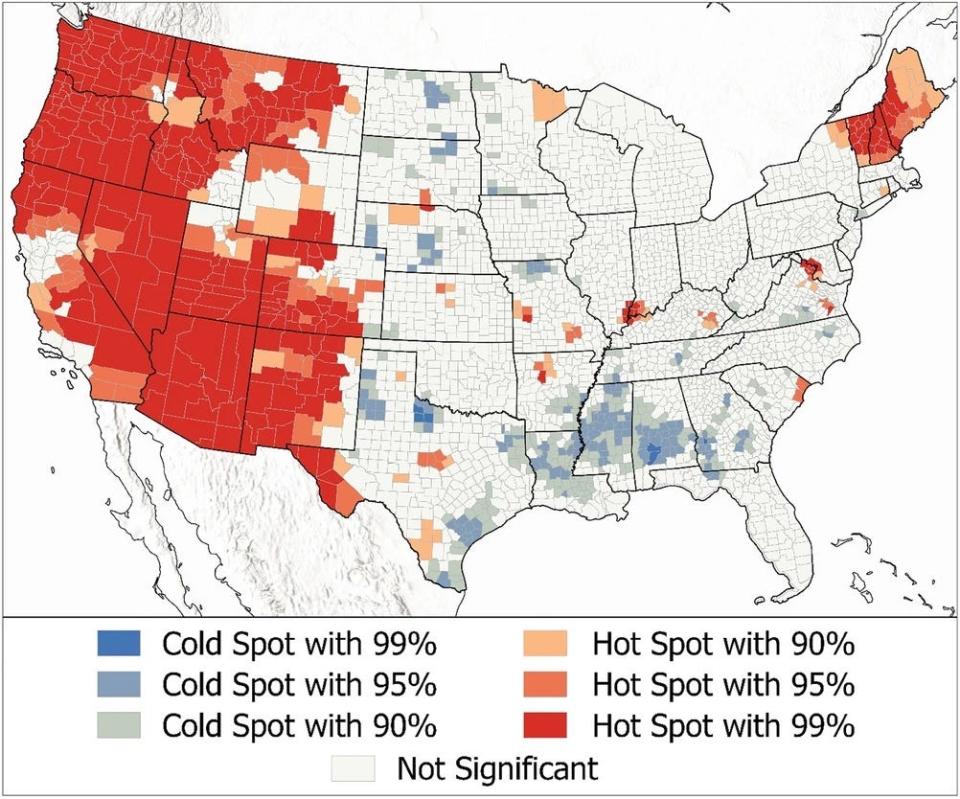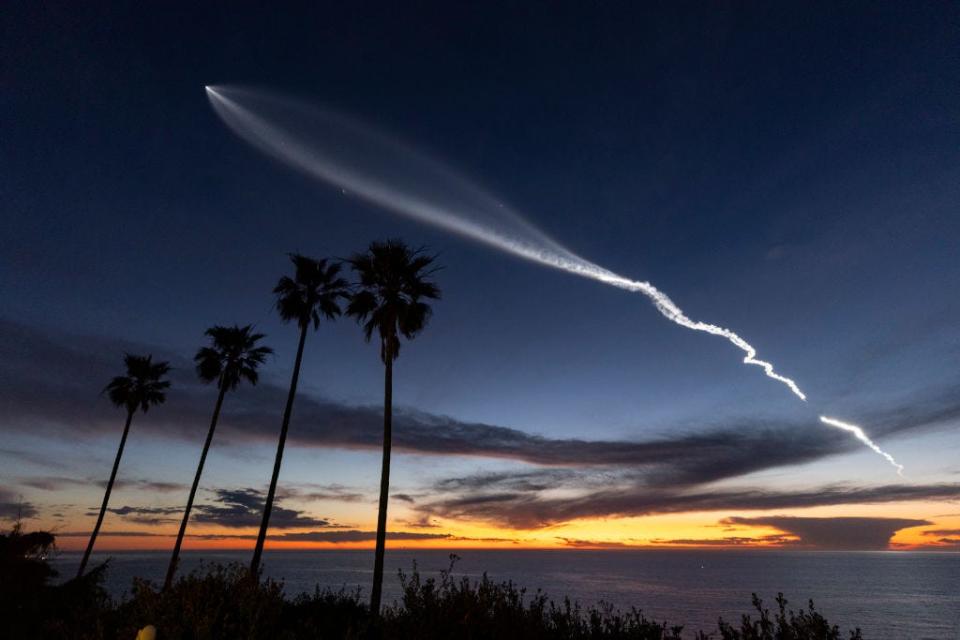Scientists listed the best place to spot UFOs in the US — but don't hold your breath

If you're hunting for aliens, you may want to head west.
Western states seem to have the best conditions to spot unidentified anomalous phenomena (UAP).
But don't roll out the welcome mat yet, there's no evidence aliens have visited Earth.
The best place to spot a UFO in the US may be out west — sightings in the US between 2001 and 2020 seem to have mostly come from there, a study found.
But don't put your tinfoil hat on just yet — there are lots of things people may be seeing instead of a little green man.
Here is a map from the study of where is hot for UFO sightings:

The west's big, open skies and low cloud cover offer the perfect viewing opportunity to spot any alien visitor dropping by.
The drawback, however, is that spots are likely marred by activity from nearby military sites and airports, the report found.
That's not to say these reports should be discarded as a whole, and that's exactly what scientists are trying to figure out with this research: what could help them filter out the truly groundbreaking spots from a sea of misinformation and confusion.
"The U.S. government—the military, intelligence and civil agencies—needs to understand what is in the operating domains to ensure the safety and security of the nation and its people," said Sean Kirkpatrick, an adjunct assistant professor of physics at the University of Georgia and former lead of All-domain Anomaly Resolution Office (AARO), said in a statement.
"Unknowns are unacceptable in this age of ubiquitous sensors and data availability. The scientific community has a responsibility to investigate and educate," per Kirkpatrick, who is an author on the study.
Did you spot an alien or a plain satellite?
If you were in Los Angeles on Tuesday you could be forgiven for thinking you saw an alien. An ethereal jellyfish-shaped blob streaked the sky as the sun was setting, traveling at an alarming speed.
What many didn't know is that a SpaceX rocket had taken off nearby, leaving behind a vapor trail that seems quite bizarre to the untrained eye.

That's an extreme example of what NASA and AARO are struggling to tackle.
US government's National UFO Reporting Center (NUFORC) takes unidentified anomalous phenomena (UAP) — its new term for UFOs — quite seriously.
These reports could be crucial evidence to track enemy tech flying under the radar in US airspace, for instance. And yes, if there were aliens flying around the Earth, this is one place scientists would be looking for them as well.
But the overwhelming majority of the reports can be easily explained by something else, like a passing satellite or rocket, or clouds distorting the light. NUFORC even has a standardized answer form explaining how Venus is often mistaken for an alien ship, per the study.
So how can they trust what you see?
UAP reports are precious information, but only if credible
In an effort to tackle this question, Kirkpatrick and his colleagues carried out a survey of where sightings are mostly coming from.
Scanning 98,724 sightings logged by NUFORC between 2001 and 2020, they found most reports are hyperlocalized in the West.
Knowing where the reports are coming from can help the scientists pick out common environmental factors that can influence the flood of reports.
For instance, if there is a strong culture of looking for aliens, that can influence the reports. In short, "if your goal is to see a UAP, you may very well see one given the opportunity," per the study.
Western people are also more outdoorsy, which gives them more opportunities to look up to the sky, the scientists said.
Some data did surprise the scientists, though. One thing they had expected is that regions with more cloud cover could be behind the hotspots of activity. Clouds can distort a flash of light. That turned out not to be the case.
California also has markedly fewer reports, they said, and they couldn't find a good reason why.
"There are many factors that can contribute to the report of anomalous objects," said Simon Brewer, associate professor of geography at the University of Utah and co-author of the study.
"By examining the spatial distribution of reports and how they relate to the local environment, we hope to provide some geographical context that may help resolve or understand reports by both the public and in military settings."
While you're waiting for that undeniable evidence that our extraterrestrial neighbors have been peeping on us, you can use this data too.
Hotspots for alien reports are places where the skies are wide open and it's easy to see the stars. They offer precious stargazing opportunities — with the added bonus of the occasional alien thrill.
The findings were published in the peer-reviewed journal Scientific Reports in December 2023.
Read the original article on Business Insider

 Yahoo News
Yahoo News 
